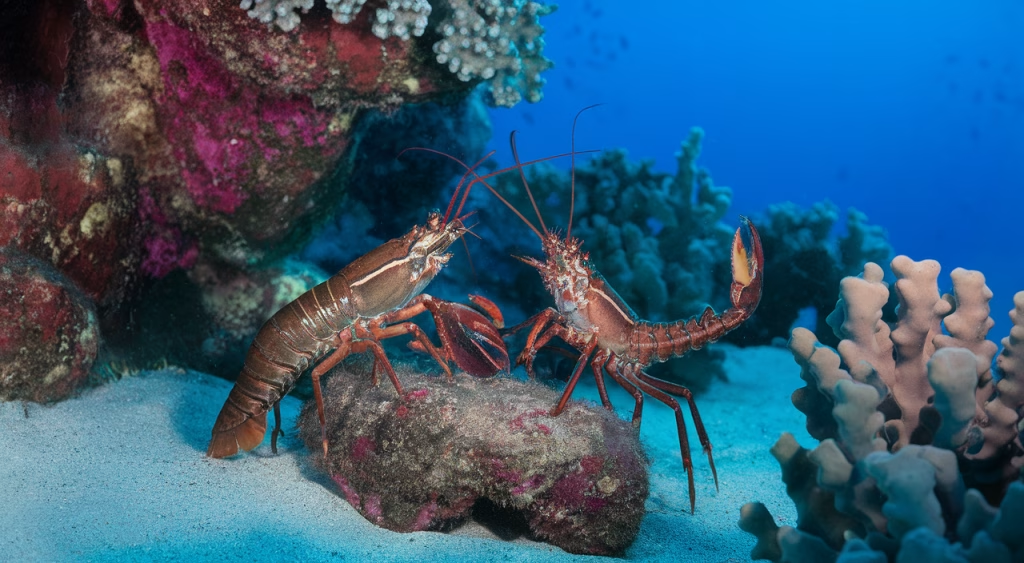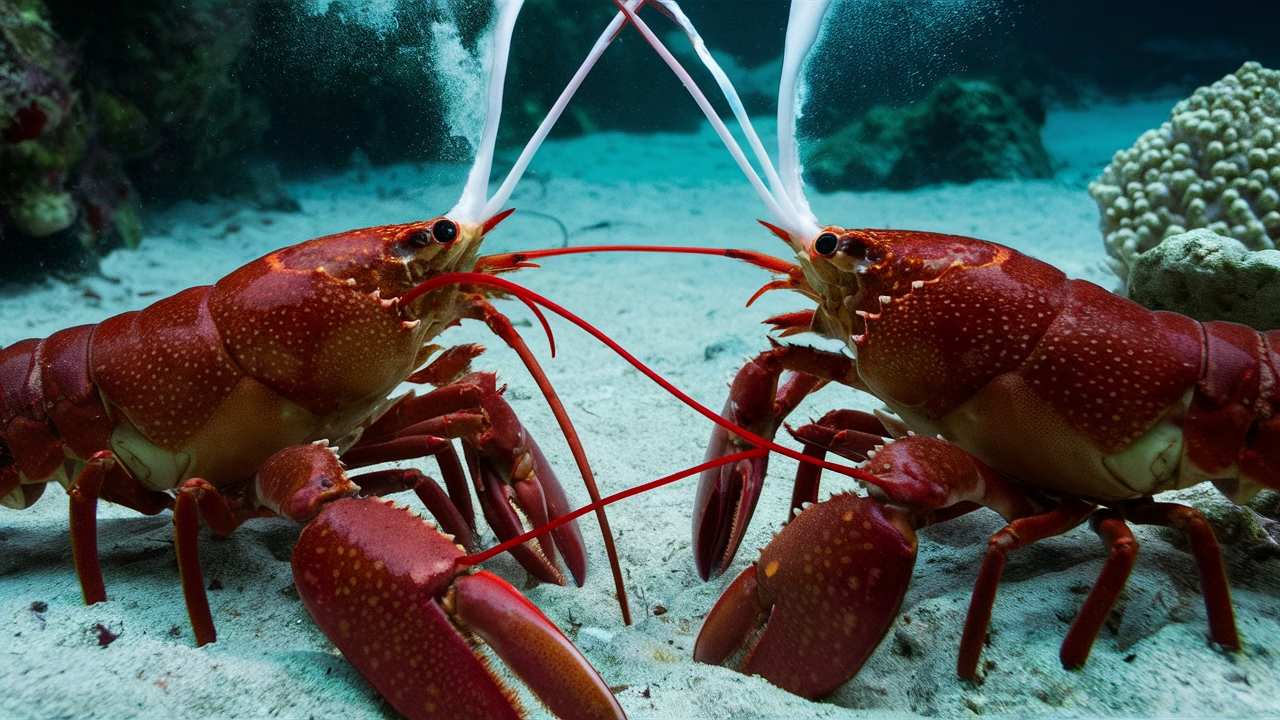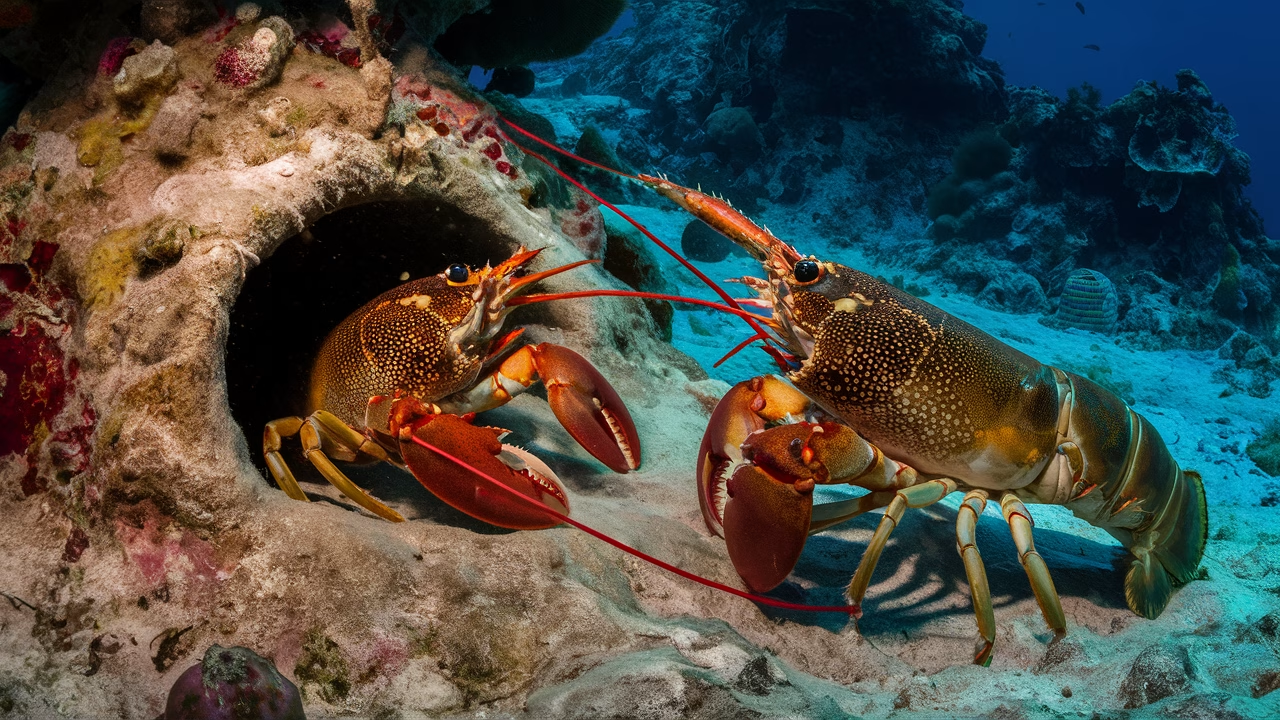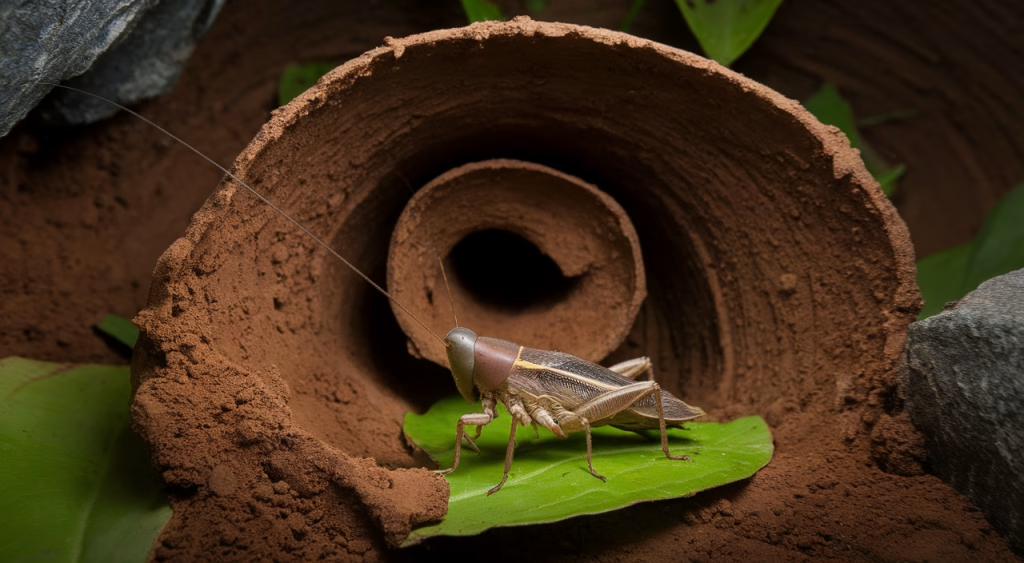Why do lobsters pee out of their faces?
Because when you’re an armored crustacean living on the ocean floor, sometimes the most effective way to communicate is through chemical messages delivered via facial urine streams.
TL;DR – Lobsters Pee From Their Faces Because…
- Communication is survival: Lobsters release urine from nephropores near their eyes to send vital chemical messages through pheromones.
- Mating requires signals: Female lobsters pee on dominant males to communicate interest and prevent aggression during vulnerable molting periods.
- Dominance battles are chemical: Male lobsters use targeted urine streams to establish territory and challenge rivals without physical combat.
- Science proves effectiveness: Research shows lobster pheromones trigger specific behavioral responses like aggression, submission, or courtship.
- Evolution shaped this behavior: Millions of years of ocean survival refined this communication method for complex underwater social structures.
The Fascinating World of Lobsters
Before we explore how lobsters pee out of their faces, let’s understand these remarkable creatures. Lobsters are ancient marine arthropods that have dominated ocean floors for over 360 million years. With their powerful claws, rapid escape reflexes, and protective exoskeletons, you might expect their communication to involve aggressive displays or physical confrontations. Instead, lobsters have evolved one of nature’s most unusual messaging systems.
Lobster communication centers around specialized organs called nephropores, located directly beneath their eyes. These biological nozzles allow lobsters to release targeted urine streams during crucial social interactions. While this lobster behavior might seem strange to us, it’s actually a sophisticated chemical communication system that helps these marine creatures navigate complex underwater social hierarchies.
This facial urination isn’t random—it’s a precise, intentional behavior that can mean the difference between finding a mate, avoiding a fight, or establishing dominance in their underwater territory.
Understanding Lobster Communication
The ocean operates like a vast chemical messaging network, and lobsters are master communicators in this underwater world. Instead of relying primarily on visual or auditory signals, lobster communication depends heavily on pheromones—powerful chemical compounds dissolved in their urine that carry detailed biological information.
When you observe two lobsters approaching each other, their antennae constantly sample the water for these chemical messages. The moment one lobster begins releasing pheromone-rich urine from their facial nephropores, the interaction’s outcome often becomes predetermined. One spray might signal “I’m a dominant male defending my territory,” while another communicates “I’m a receptive female ready for mating.”
Here’s how lobster pheromone communication typically works:
- Detection: Lobsters sense approaching individuals through water vibrations and chemical traces.
- Chemical assessment: The approaching lobster releases targeted urine streams to communicate intentions and status.
- Behavioral response: The receiving lobster interprets these pheromones and responds with submission, aggression, or courtship behaviors.
This system allows lobsters to resolve conflicts, initiate mating, and maintain social order without unnecessary physical confrontations that could damage their vital claws or shells.
The Science Behind Lobster Pheromones
Lobster pheromones represent one of marine biology’s most sophisticated chemical communication systems. These molecular messages regulate everything from territorial disputes to reproductive timing, making them essential for lobster survival and species continuation.
What makes lobster pheromones particularly fascinating is their specificity and timing. Female lobsters produce distinctly different chemical signatures depending on their molting cycle, reproductive readiness, and social status. Males have evolved highly sensitive chemoreceptors that can detect these subtle variations and adjust their behavior accordingly—either initiating courtship rituals or preparing for competitive displays.
Groundbreaking research published in Science demonstrated how male lobsters show measurable behavioral changes when exposed to different female pheromone concentrations. Dominant males, typically aggressive and territorial, become remarkably gentle when detecting pheromones from molting females ready for mating. This chemical override of natural aggression ensures successful reproduction while protecting vulnerable females during their most defenseless period.
The precision of this pheromone system reveals millions of years of evolutionary refinement, creating a communication method perfectly adapted to the ocean’s challenging environment.
The Intriguing Mating Rituals of Lobsters
Lobster mating rituals showcase facial urination at its most sophisticated, combining chemical communication with complex behavioral sequences that ensure species survival. Here’s how these remarkable mating encounters unfold:
- The female seeks a dominant male’s shelter. She’s looking for superior genetics and protection during her vulnerable molting period.
- She approaches his burrow and releases targeted urine streams. These pheromone-rich messages communicate her reproductive status and peaceful intentions.
- The male analyzes her chemical signals. His response depends entirely on the pheromone cocktail she’s broadcasting.
- If she’s ready to molt, he accepts her presence. The male recognizes her vulnerability and switches from aggressive to protective behavior.
- After successful molting and mating, the male guards her for days until her new shell hardens, ensuring no competing males can interfere.
This intricate dance of chemical communication and behavioral adaptation demonstrates how lobster pheromones create complex social structures beneath the waves. Female lobsters often remember the scent signatures of particularly successful males, returning to them across multiple mating seasons.
Implications and Discoveries in Marine Biology
Research into how lobsters pee out of their faces has revolutionized our understanding of marine communication and animal behavior. These discoveries extend far beyond simple curiosity about unusual animal facts, revealing fundamental principles of ocean life adaptation and survival strategies.
- Marine creatures rely heavily on chemical messaging because ocean environments often limit visual and acoustic communication.
- Facial urination in lobsters demonstrates precise directional control, indicating sophisticated neural coordination between intention and execution.
- Pheromone-based social structures can maintain complex hierarchies without constant physical confrontation.
Modern marine biology research now applies these insights to broader environmental concerns. Scientists study how ocean pollution affects pheromone transmission, potentially disrupting lobster communication and mating success. Climate change research also examines how temperature and pH changes might alter chemical messaging effectiveness, with implications for entire marine ecosystems that depend on chemical communication.
Conclusion: Why Lobster Face-Peeing Matters
Understanding why lobsters pee out of their faces reveals the incredible sophistication hidden within seemingly bizarre animal behaviors. This isn’t just evolutionary quirkiness—it’s a highly refined communication system that enables complex social structures, successful reproduction, and species survival in challenging ocean environments.
From chemical courtship rituals to dominance displays, lobster pheromones demonstrate nature’s remarkable ability to develop unexpected solutions to survival challenges. The next time you encounter these armored marine creatures, remember that their most important conversations happen through facial urine streams carrying messages we’re only beginning to understand.
Frequently Asked Questions
- What are some fun facts about lobsters mating?
Lobster mating includes face peeing, burrow protection, careful courtship during molting, and months of sperm storage. - Do both male and female lobsters pee on each other?
Primarily females initiate urine spraying during courtship, though males also spray during fights or territory defenses. - Can lobsters communicate in ways other than urination?
Yes—claw postures, antennae twitching, and body movements also convey information, but pheromone-laced urine is the most potent. - Why do lobsters pee near their eyes?
The location near the eyes helps direct urine outward in a controlled spray, aimed at specific individuals for communication. - Is facial urination unique to lobsters?
It’s rare but not 100% unique—some marine species use similar methods, but lobsters are masters of it. - Does pollution affect lobster communication?
Yes—if pollutants interfere with pheromone transmission, lobsters may struggle to find mates or resolve conflicts. - How do scientists study this?
By observing wild lobsters in controlled tanks, often using dye-tracing in urine to analyze directed sprays and behavioral responses.





